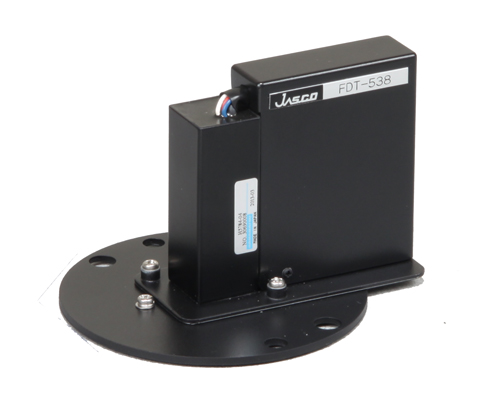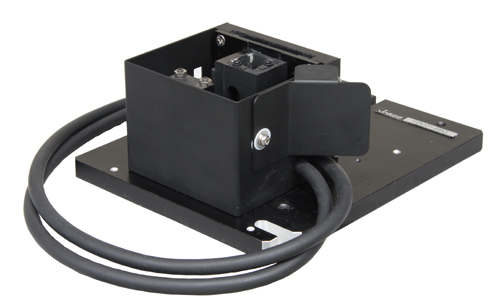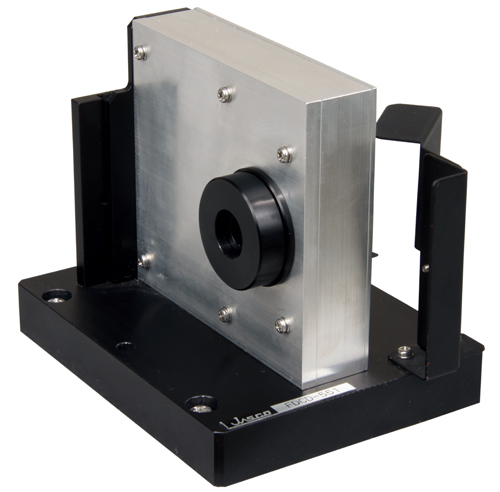JASCO | Fluorescence Measurement Accessories
Intrinsic fluorescence can be measured on the J-1500 or J-1700 CD spectrometers, with either the single-position Peltier cell holders (PTC-510 and PTC-517) or turreted six-cell Peltier (MPTC-513).
A simple low-cost system for detection of total fluorescence is available using a secondary detector and high-pass fi lters (FDT-538 and FST-470), allowing the user to select the excitation wavelength while detecting the emission at the wavelengths above the cut-off filter. This allows for simple, yet sensitive, detection of fluorescence changes during titration or thermal ramp experiments.
Alternatively, fluorescence data can be acquired by using the optional scanning emission monochromator (FMO-522) and emission detector (FDT-538). Excitation and fluorescence emission spectra can be scanned by fixing the emission or excitation wavelengths, respectively.
• Fluorescence scanning can be coupled with the titration and thermal ramping capabilities
• With the MPTC-513, CD and fluorescence data can be collected, simultaneously or separately, on up to six samples


The J-1500 and J-1700 CD instruments use circularly polarized light that is generated by phase modulation. By controlling the amplitude of the phase modulation, it is also possible to measure linear dichroism (LD), which is the differential absorption of light polarized parallel and perpendicular to an orientation direction.
Using this same principle, when polarized light interacts with a fluorescent molecule, the resulting fluorescence emission has different intensities along different polarization axes. This fluorescence aniostropy can be measured as shown in the diagram below where the polarized light passes first through a polarizer (analyzer) and then a detector that is positioned 90° relative to the excitation beam. The polarizer is oriented so that only the vertical component of light passes to the detector.

